The following intelligence report on the Japanese Yokosuka MXY-7 Ohka (Allied nickname “Baka”) appeared in the June 1945 issue of C.I.C. (Combat Information Center) published by the U.S. Office of the Chief of Naval Operations.
…flying warhead CIC watch officers. FDO’s and radar operators have been given something to remember. The discovery on Okinawa of a number of small Japanese planes specifically dedicated to suicide missions warrants a second, and serious thought. This type of plane appears to be the latest thing in the Japanese technique of suicide air attack. The timely Okinawa discovery should serve to alert CIC personnel to the possibilities, as well as the probabilities, of attacks by these planes.
Code named “BAKA” ( Japanese for “Fool”) these small planes are carried under the belly of a parent aircraft. Carrying a pilot and minimum of controls they are to be released 20 to 25 miles from their target, which they reach with increased speed by dive angle and jet propulsion. “BAKA” carries a 2645 lb. warhead (filling weight 1165 lbs.) in the nose section of its fuselage. This warhead is semi-armor piercing and probably has good penetration.
The Betty 22 is the only “rocket-jockey” so far identified, but Sally, Peggy, Helen, Rita and Liz must be listed as probables since they can be easily adapted to parent aircraft duty with slight modification. “BAKA” literally hooks a ride with the parent aircraft, being suspended in flight by a single bomb-type lug just forward of the C.G.
It takes a nose down attitude on release. Heavy canvas straps, one forward and one aft, provide balance and absorbs some of the weight. Ten sway brace points keep “BAKA” rigid and parallel to airflow during its transport flight.
It is thought that release is made at about 200 mph. A shallow glide for about two minutes clears the parent aircraft and gains some speed for “BAKA.” The pilot then switches to rocket propulsion, from three rocket tubes in the rear section of the fuselage gaining additional speed and regaining slight altitude. This rocket process is repeated until the target is sighted, whereupon the nose is lowered, a bead is drawn on the target by means of single ring and bead sights located forward of the pilot canopy, and the super-Kamikaze death plunge is on its way.
CIC personnel will be concerned particularly with the following estimates and evaluations of “BAKA” tactics:
1. The most logical approach for the parent plane is at an altitude between its practical service ceiling (for Betty-Ag. 17 to 20) and its theoretical service ceiling (for Betty-Ag. 27). Ceilings of other parent aircraft would not vary appreciably from these normal ceilings. This will permit “BAKA” to reach its target at maximum speed and, it will permit the parent aircraft to retreat without coming too close to our formations.
2. The above evaluation does not preclude lower level attacks with points of release nearer our formations, particularly where a land back-drop may be involved. Actual sightings have been reported. One release was made at altitude of 4000 feet, 7 miles from our ships. Another release was made outside visual range.
3. Maximum speed of the parent aircraft, while carrying “BAKA” is reduced approximately 15 to 20 mph.
4. The approximate maximum horizontal range of “BAKA”, after release at service ceiling, is from 20 to 25 miles. This distance is based upon a minimum glide angle of 16°20′. Based upon present available data it is considered to be maximum practical range. At lower launching ceilings, maximum range will be slightly decreased.
5. The overall length of “BAKA” is about 20 feet. It has a wing span of 16 feet. When released from the parent plane it will reflect a small, fast moving pip on the radar screen. It will be difficult to detect.
6. The parent aircraft will undoubtedly reverse course immediately upon releasing “BAKA.” There may be a tendency on the part of radar operators to follow this opening track of the parent plane—overlooking the smaller target echo of the “flying warhead” that will close the ship rapidly.
7. Operators may evaluate the released “BAKA” echo as window on the first sweep, then lose it altogether on succeeding sweeps. Concentrated PPI scanning, with added attention to the A-scope on all raid bearings may become mandatory-particularly when a raid apparently turns away at 20-30 miles.
8. Speed, altitude and limited maneuverability of a parent plane pregnant with “BAKA” should provide a set-up for CAP interception prior to release point. Once “BAKA” is released, both CAP and ships AA firepower will be handicapped by the 630 mph. speed of a diving “BAKA.”
Though a potential threat if used to combat our operations in the future, “BAKA” faces several potent obstacles to its successful employment in air-suicide attacks on our ships. To be most effective “BAKA” will approach at high altitudes—such approach being easier to detect at greater ranges and is reminiscent of our earlier fighter direction field days when raids nearly always came in at these angels. Further, the control surfaces on this plane are so small that once its aim has been committed, the tremendous speed of the dive will allow very little course deviation. And, the fact remains that a complete training course for “BAKA” pilots is impossible, for its most important phase upon which depends success or failure of the weapon—the dive onto a pin pointed target—can be accomplished but once.
Notwithstanding the above-mentioned disadvantage, the greatest obstacle to successful “BAKA” operation can and must be—early detection, interception and destruction of the parent aircraft by our radar operator-intercept officer-fighter pilot team before the “BAKA” is near enough to our ships to be released.

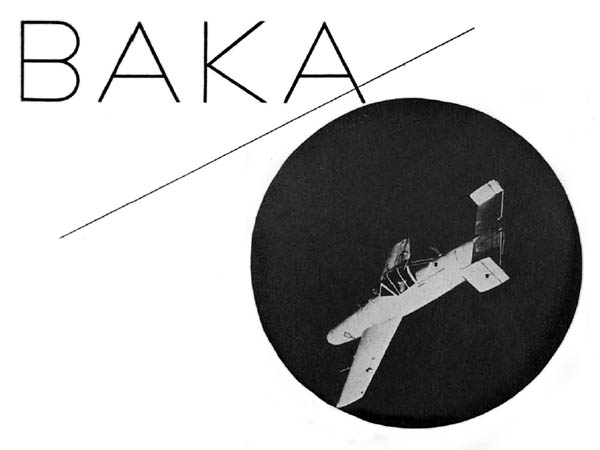
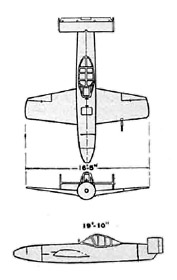
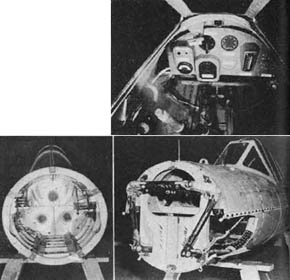
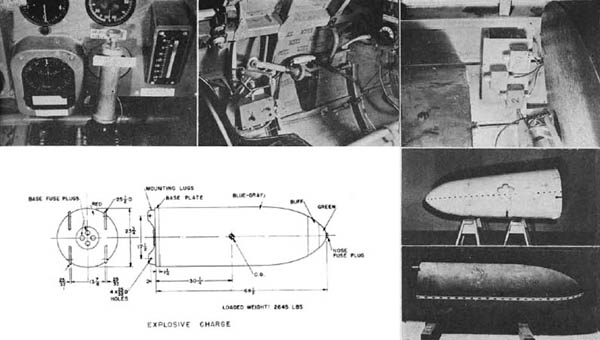
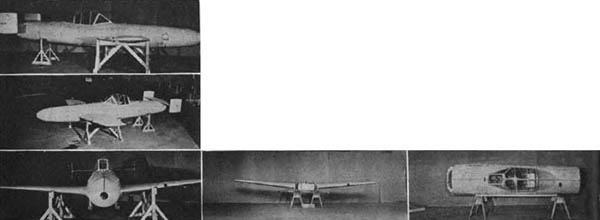










BTW; does anyone know any specifics about how the three solid-fueled rocket engines on the Ohka operated?
I’ve read descriptions of them being fired for short bursts after release from the Betty bomber, but their design should only allow them to be ignited once and then keep burning till their solid fuel was expended, like a JATO bottle.
I was under the same impression (once the rocket is fired, it can’t be stopped), but I can’t seem to find a definite statement online. Maybe the rockets could be fired one at a time?
The Japanese were also working on a version to be carried by submarine.
Interesting article. Looked up a Japanese site on the Ohka and found some more info. There were very few successful hits with the thing. The first two forays against US ships were eliminated by F6F CAP due to good radar work.
Sum total of the effort was 55 pilots lost, 368 crew members of the mother ships lost, one confirmed sinking of DD 733 (split in half, sunk immediately) and some other allied ships damaged. Not much to show for the effort.
Four refined versions were planned, the type 21 with a warhead reduced from 1200 to 800kg, the type 22 with a different type of rocket engine, type 33 with a stronger engine to be carried by a bigger mother ship and the type 43 with a jet engine for catapult launch from land, a 200 km range and only a 600 kg warhead. No submarine version that I can find, but maybe that was envisioned for this jet version.
Also, they were supposed to be first used in the Philippines but the carrier Shinano carrying them there was sunk.
None of these passed the development stage before the end of the war.
When I first heard about these years ago, I read that the boots of the pilots were bolted in, but who knows.
100% correct. The Ohka were not very successful. I don’t know how much training the pilots received, but it can’t have been training much. Nowhere near as much training time as say a U.S. glider pilot in the airborne.
There was a two-seater trainer. Fun job that.
http://upload.wikimedia.org/wikipedia/commons/3/3c/Kugisho_22.jpg
The Germans had one too:
http://en.wikipedia.org/wiki/Fieseler_Fi_103R_%28Reichenberg%29
http://en.wikipedia.org/wiki/Fieseler_Fi_103
The german one was not a suicide aircraft. It had weapons
my mistake, thought you linked to another weapon. However, these guys had parachutes and the opportunity to jump whereas the Japanese had no chance once on board. Hitler, bless his heart, said suicide was not in the german spirit and had the program canceled……before he committed suicide….hahahahaha!
Are you thinking of the Natter?
http://www.lonesentry.com/features/f36_natter-bachem-ba349.html
The Germans had designs for several different aircraft powered by pulse jets besides the V-1, including the Romeo and Elli low-cost fighters:
http://www.luft46.com/heinkel/hep1077.html
http://www.luft46.com/junkers/juef126.html
The Luftwaffe did have the Rammkommando Elbe. From Wikipedia:
I was under the same impression (once the rocket is fired, it can’t be stopped), but I can’t seem to find a definite statement online. Maybe the rockets could be fired one at a time?
The Japanese were also working on a version to be carried by submarine.
I liked the article, I’ll be back to read more of your blog later =)
I appreciate you sharing this article. Great.